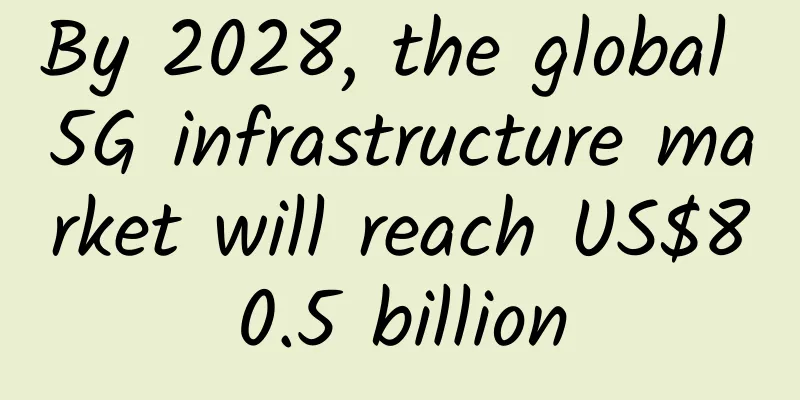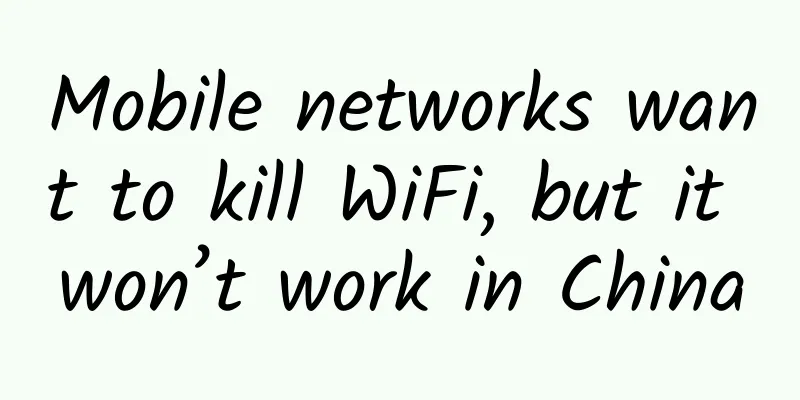By 2028, the global 5G infrastructure market will reach US$80.5 billion

|
According to data released by market research firm ResearchAndMarkets, by 2028, the global 5G infrastructure market is expected to reach US$80.5 billion, with a compound annual growth rate of 49.8%. Significant investments by communication service providers to deploy 5G infrastructure across the globe to provide improved data services are estimated to drive the market. In addition, strong innovations in next-generation 5G network equipment and deployment modules will help reduce the overall deployment costs for service providers. Thus, it is expected to drive the deployment of 5G infrastructure during the forecast period. According to the report, a significant increase in demand for high-bandwidth connectivity for several use cases, such as access to ultra-high-definition (UHD) videos, cloud-based AR/VR gaming, and high-definition video conferencing, is expected to drive market growth during the forecast period. In addition, a wide range of industries, including manufacturing, oil and gas, mining, energy, and utilities, are investing heavily in the deployment of 5G networks. 5G networks help industrial facilities improve overall productivity and operational efficiency. Hence, the growing need for high-bandwidth capacity to establish unified connectivity to millions of Industrial Internet of Things (IIoT) devices is expected to boost market growth from 2020 to 2027. With the advent of 5G technology, the transportation and logistics industry is undergoing a major transformation towards building an autonomous ecosystem. In addition, the deployment of 5G networks will help provide seamless data speeds for various transportation applications, including ships and ports, vehicle-to-everything (V2X), and drone connectivity. Furthermore, the significant demand for high-speed bandwidth capacity for emergency medical applications such as remote patient surgery is expected to strengthen the market growth from 2020 to 2027. Furthermore, the rapid construction of multiple smart cities for energy management and cloud storage applications is expected to further augment the market growth. The ongoing COVID-19 pandemic has adversely impacted the 5G infrastructure market. Several telecommunication equipment manufacturers around the world have suspended the production and export of 5G equipment. Furthermore, the federal governments of major countries such as the U.S., France, the U.K., and Australia have temporarily postponed 5G spectrum auctions in their countries. Moreover, the escalating trade war between the two largest economies coupled with growing security concerns is estimated to hamper the market growth. Some key points about this 5G infrastructure market report are as follows:
|
<<: A simple introduction to the consensus algorithm Raft
>>: It’s time to promote 5G applications
Recommend
What does Wi-Fi 6 and 5G convergence look like?
With Wi-Fi 6 and 5G convergence, the connectivity...
How to promote 5G packages in small and medium-sized cities
From the perspective of package value, the curren...
Wireless router, how many little secrets do you have?
Everyone has a wireless router at home. However, ...
Aruba Wi-Fi 6E Joins 1,400 Colleges and Universities Worldwide to Create a Smart Campus for the Future
Aruba, a Hewlett Packard Enterprise company, rece...
How to determine whether two IP addresses are in the same network segment? What is a subnet mask?
We have read many articles before about IP addres...
Talking about IPv6 tunnel technology
IPv6 was originally designed without tunnel techn...
Huawei's Hu Houkun: Continuously empowering digital economic innovation, connectivity will head in these five directions
On December 6, at the 2021 China Unicom Partner C...
How many of the 7 core technologies that operate blockchain do you know?
1. Blockchain Links As the name implies, blockcha...
Application of SRv6 Technology in Home Network
1. SRv6 Concept Segment Routing (SR) is a source ...
RAKsmart: 30% off on all VPS, VPS hosting in Hong Kong/Japan/Los Angeles/San Jose starting from $1.99/month
RAKsmart's December year-end promotion has be...
Firmly oppose! The Ministry of Foreign Affairs responded to the US revoking the operator's operating authorization in the US
[[388612]] On March 19, at the regular press conf...
If WiFi coverage is not good, should I use a wireless repeater or a powerline modem?
[[240625]] Poor WiFi signal is a headache for man...
Many countries around the world are competing to deploy 5G using the NSA method. How did it become "fake 5G"?
At 11:00 pm on April 3, 2019, South Korean operat...
How to prevent 5G from creating a new digital divide
There is no doubt that more pervasive 5G technolo...
Basic knowledge of wires and cables
The manufacturing of wires and cables is complete...






![[11.11] Spinservers cloud server 50% off $19/month, dual core, 8G memory, 200G SSD, 10TB monthly traffic](/upload/images/67cac2342a4e5.webp)


